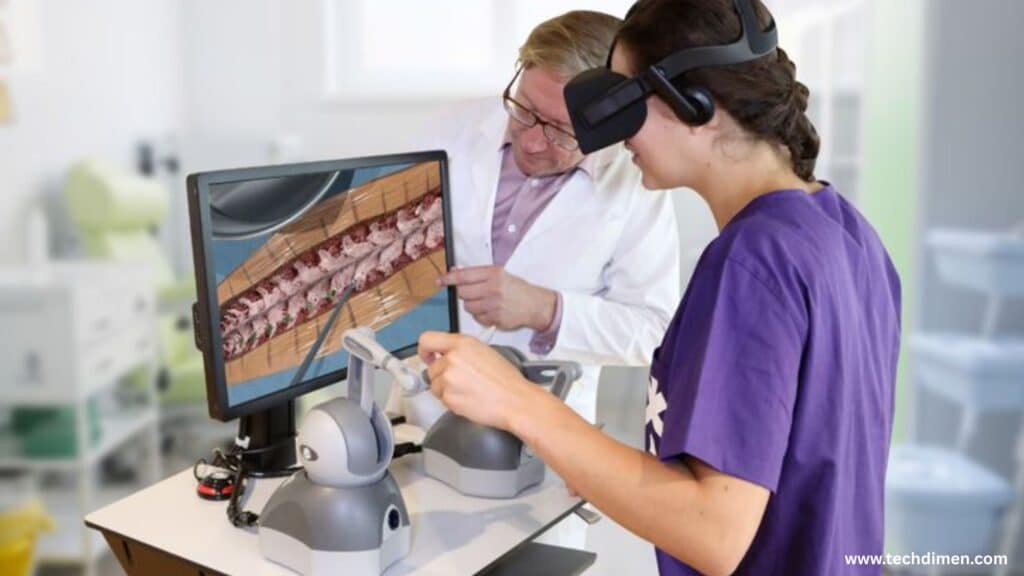Technology is evolving rapidly. Among the many innovations shaping industries, Fits Technolog Explained stands out as a flexible and powerful approach to building IT systems that keep pace with modern demands. But what exactly is Fits Technology? How does it work, and why is it gaining so much traction? This article dives deep into Fits Technology, explaining its core principles, comparing it to traditional systems, showcasing real-world applications, and guiding you on whether it fits your business needs.
Why You Should Care About Fits Technology
Imagine struggling with outdated IT systems that resist change and slow down your business. This is the reality for many organizations. Fits Technology offers a way out by creating systems that adapt quickly, integrate smoothly, and scale effortlessly. Many industries healthcare, retail, logistics, and smart cities already use Fits Technology to solve complex problems and accelerate innovation.
Defining Fits Technolog Explained Clearly

Fits Technology refers to modular, interoperable, and scalable IT frameworks designed to fit seamlessly into existing environments. The focus lies in enabling flexibility, allowing organizations to add or replace system components without major disruptions.
This concept builds on established ideas like microservices and API driven design but emphasizes easy integration and business agility. At its heart, Fits Technology relies on three main pillars: modularity, interoperability, and scalability.
the Core Components of Fits Technology

Modularity
In Fits Technology, software breaks down into small, self-contained units known as modules. Each module performs a specific function independently. This approach allows organizations to develop, test, and deploy parts of a system separately.
Interoperability
Modules communicate with one another through standard interfaces, often APIs (Application Programming Interfaces). This seamless communication across different platforms ensures components work together without friction.
Scalability
Fits Technology enables systems to grow or shrink based on demand. Whether your application needs more resources during peak times or less when demand falls, modular systems can adjust without costly overhauls.
How Fits Technolog Explained Operates in Real Life Systems

Fits Technology functions much like a carefully crafted LEGO set. Each piece (module) snaps perfectly with others, allowing for endless configurations and easy customization.
In a typical system, when a user sends a request or input, the relevant modules spring into action through APIs or microservices. These modules process the information, communicate as needed, and deliver a result or trigger additional tasks.
For example, a logistics company might use Fits Technology to connect shipment tracking, warehouse management, and customer communication systems. When order volumes surge, the company can add modules for route optimization and pricing adjustments without disrupting other parts of the system.
Comparing Fits Technology to Traditional Systems
Traditional IT systems tend to be monolithic, meaning all components are tightly linked together. This makes them rigid, hard to scale, and expensive to maintain.
Fits Technology breaks this mold by allowing businesses to build flexible, modular systems that adapt as needs change. Unlike traditional setups, Fits Technology supports rapid innovation since modules can be developed and deployed independently.
The advantages are clear. Flexibility increases, costs lower over time, and system downtime decreases. However, businesses must prepare for initial investment in training and infrastructure and be aware of integration challenges with legacy systems.
Real World Examples of Fits Technolog Explained in Action
Healthcare Industry
Hospitals and healthcare providers use Fits Technology to integrate patient records, lab results, and telemedicine platforms. This integration allows doctors to access real-time, comprehensive data, speeding up diagnoses and improving patient care.
Retail Sector
Retailers employ Fits Technology to manage inventory dynamically. Point-of-sale systems connect with warehouses and online stores, automatically updating stock levels and triggering restocking as products sell.
Smart Cities
Urban centers implement Fits Technology to synchronize traffic lights, public transit, and emergency response systems. This coordination improves traffic flow, reduces emissions, and enhances the overall quality of life for residents.
Geographic Trends in Fits Technolog Explained Adoption
Adoption rates vary globally. North America leads with large-scale deployments in finance and healthcare. Europe focuses heavily on smart city technologies, while Asia rapidly embraces Fits Technology in manufacturing and automation sectors. These regional differences highlight Fits Technology’s versatility across industries and markets.
How to Determine If Fits Technolog Explained Is Right for Your Business
Ask yourself several key questions. Does your organization struggle with integrating new software into existing systems? Are upgrades costly and slow? Does your business require fast deployment of new features and easy scalability?
If you answered yes, Fits Technology could offer significant benefits. However, readiness depends on your budget, infrastructure, and staff expertise. Early adopters often gain a competitive edge but must navigate learning curves and potential security concerns carefully.
Common Challenges and How to Overcome Them
Implementing Fits Technology isn’t without hurdles. Neglecting infrastructure assessment, underestimating organizational change, or overlooking security can cause problems. Addressing these upfront ensures smoother transitions.
Training your team and choosing the right tools and partners plays a vital role in success. Embracing regulatory requirements from the start also helps avoid costly compliance issues later.
What Lies Ahead The Future of Fits Technology
The integration of quantum computing promises to boost complex computations within modular frameworks. Edge AI applications will bring faster, localized processing power to devices, enhancing real-time decision-making.
Cloud-native architectures, containerization, and serverless technologies will further enhance flexibility. Meanwhile, regulatory bodies continue developing standards to protect modular systems from security threats.
Industry experts predict widespread adoption by 2030, with most enterprises relying on Fits Technology to maintain competitiveness and agility.
Additional Resources to Explore
For a deeper dive, consult whitepapers on modular software architecture and API integration. Case studies on smart city implementations and healthcare data management offer practical insights. Exploring these resources will help you understand Fits Technology’s real impact and plan your own adoption strategy.
FITS Technology Overview Table
| Type | Purpose | Key Features | Best For |
|---|---|---|---|
| Standard FITS | Basic image/data storage | Readable headers, binary data | General astronomy data |
| Compressed FITS | Reduce file size | GZIP, RICE, HCOMPRESS compression | Archiving, fast transfers |
| MEF (Multi-Ext) | Store multiple datasets | Multiple images/tables in one file | CCD mosaics, complex systems |
| Binary Tables | Scientific tabular data | Compact, fast, array support | Catalogs, spectral data |
| ASCII Tables | Simple readable tables | Plain text, editable | Small tables, human readability |
| Tile Compression | Fast access to large images | Loads image sections as needed | Surveys, high-res previews |
| WCS-Enabled FITS | Coordinate mapping | Links pixels to sky coordinates | Astrometry, image alignment |
FAQs: Fits Technolog Explained
What is Fits Technology?
Fits Technology is a system used in engineering and manufacturing to determine how two parts fit together typically a hole and a shaft. It defines the degree of tightness or looseness between them, which directly affects how easily they assemble and function. Whether the parts slide, lock firmly, or need pressure to fit, this technology ensures they perform correctly without failing or wearing down prematurely.
Why is Fits Technology important?
Proper fit is essential for mechanical reliability. If parts are too loose, they may wobble, cause vibrations, or wear out quickly. If too tight, they could be difficult to assemble or even break under stress. Fits Technology helps designers and engineers select the appropriate tolerances so the assembled product is stable, efficient, and durable.
What are the types of Fits Technolog Explained?
There are three main types of fits used in design and manufacturing. A clearance fit always leaves enough space for parts to move freely, making it ideal for components that need to slide or rotate. An interference fit creates a tight connection by slightly oversizing one part so it must be forced into the other, ensuring a secure and rigid joint. Transition fits lie between the two extremes, offering either a snug or slightly loose connection depending on manufacturing variations. This type provides flexibility for components that may need to be disassembled or adjusted later.
How are fits calculated?
Fits are based on tolerance systems defined by standards such as ISO and ANSI. These systems specify the acceptable variations in dimensions for holes and shafts. Engineers apply these tolerances to ensure that when two parts are manufactured, they will fit together as intended, whether loosely or tightly. The calculation involves determining the maximum and minimum limits for each part and comparing them to identify the resulting fit type.
What’s the difference between Hole Basis and Shaft Basis systems?
In a hole basis system, the hole size remains constant while the shaft size changes to create the desired fit. This method is the most commonly used because holes are harder to machine accurately. In contrast, the shaft basis system keeps the shaft size fixed and adjusts the hole instead. This is often used when shafts are mass-produced or standardized and modifying the hole is more practical.
How are Fits Technolog Explained measured?
To verify whether parts meet the specified tolerances, engineers use precision measuring tools. Micrometers, calipers, and coordinate measuring machines (CMMs) are commonly used to measure dimensions down to the smallest fractions of a millimeter. Accurate measurement ensures the parts will interact as expected when assembled, preventing mechanical failure or performance issues.
What industries use Fits Technolog Explained?
Fits Technology is used across many sectors where precision and reliability matter. In the automotive industry, it ensures that engines and transmission parts work smoothly. Aerospace applications depend on precise fits to maintain safety under extreme conditions. Machinery, robotics, and even electronics rely on proper fits to align components, reduce wear, and ensure smooth operation. Almost every manufactured product that involves moving parts or tight assemblies incorporates this technology.
How do I choose the rightFits Technolog Explained?
Choosing the right fit depends on several factors, including how the parts will function, the forces they’ll encounter, the materials involved, and how the parts will be assembled. If a component needs to move freely, such as a rotating shaft, a clearance fit is typically best. If the goal is to create a solid, immovable connection, an interference fit is more appropriate. For assemblies that might require future disassembly or minor movement, a transition fit often strikes the right balance.
Is there a standard chart for Fits Technolog Explained?
Yes, both the ISO 286 and ANSI B4.1 standards provide detailed charts that classify fits based on part dimensions and tolerance levels. These charts guide engineers in selecting the correct hole and shaft combinations to achieve the desired fit. You can view an example of an ISO fit chart here.
Can you give a simple analogy?
Imagine trying to fit everyday objects together. A spoon that slides easily into a cup without resistance is like a clearance fit. A rubber stopper that requires pressure to push into a bottle, and stays tightly in place, represents an interference fit. A puzzle piece that sometimes snaps in tightly and other times fits with a light push illustrates a transition fit. These simple comparisons help explain the core idea behind fit types without needing technical details.
Final Thoughts:Fits Technolog Explained
Fits Technology represents more than a technical upgrade it signals a new way to build, manage, and grow IT systems. Its flexibility and scalability offer businesses the freedom to innovate without fear of system rigidity.
Delaying adoption could mean falling behind competitors who leverage Fits Technology’s advantages for faster innovation and better customer experiences. The time to explore and adapt is now.

Jhon AJS is a tech enthusiast and author at Tech Dimen, where he explores the latest trends in technology and TV dimensions. With a passion for simplifying complex topics, Jhon aims to make tech accessible and engaging for readers of all levels.







